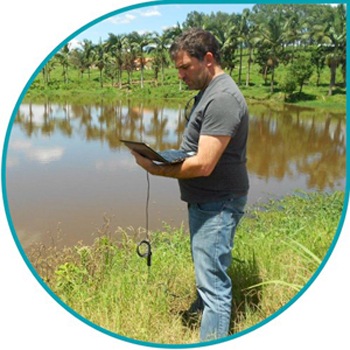Uvilux Monitors River Contamination Following Diesel Truck Spill In Sao Paulo
Ag Solve, Brazil were called to the scene of an accident involving a large oil tanker on the Bandeirantes Highway, Sao Paulo, Brazil

The spill of 30,000 litres of diesel oil from the tanker caused soil and water contamination. Mauro Banderali from Ag Solve used a CTG Uvilux to track the pollutant in the surrounding rivers.
"We had already checked the water quality of the river before the accident using the CTG Uvilux," said Mauro. The UviLux had reported very low hydrocarbon readings (5-20 units). When we monitored the water after the accident the UviLux registered 60-70 units. We then checked the water quality in a lake that supplies the city, and again the hydrocarbon readings were high." Mauro Banderali and his team continued their survey in the City of Indaiatuba where they found the tap water contained 80 units of hydrocarbons.
UviLux data taken two days after incident from the River Toledos, close to the spill incidence, which shows a high presence of contaminants.
Further readings were taken at different points in the river using the UviLux PAH near the cities of Sumare and Santa Barbera do Oeste.
Conclusion: The Ag Solve team concluded that contamination of the water was high and that further monitoring would be required to better evaluate the environmental damage and best remediation methods.
Ag Solve, used a Chelsea Technologies Uvilux hydrocarbon fluorometer for their survey. The UviLux is an extremely sensitive digital UV fluorimeter for on-site applications. It allows the user to monitor in real-time the concentration of polyaromatic hydrocarbons and crude hydrocarbons. It has been used for hydrocarbon detection around drilling rigs and monitoring of airport leaks and coastal pollution plus to monitor the quality of recycled water.
CONTACT
Ellen Keegan
Chelsea Technologies Group Ltd
sales@chelsea.co.uk
www.chelsea.co.uk
+44 20 8481 9000
Saturday 3 June 2017 / file under Environmental | Oil | Utilities


